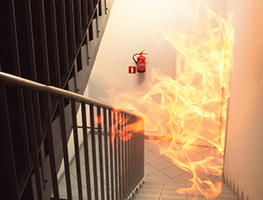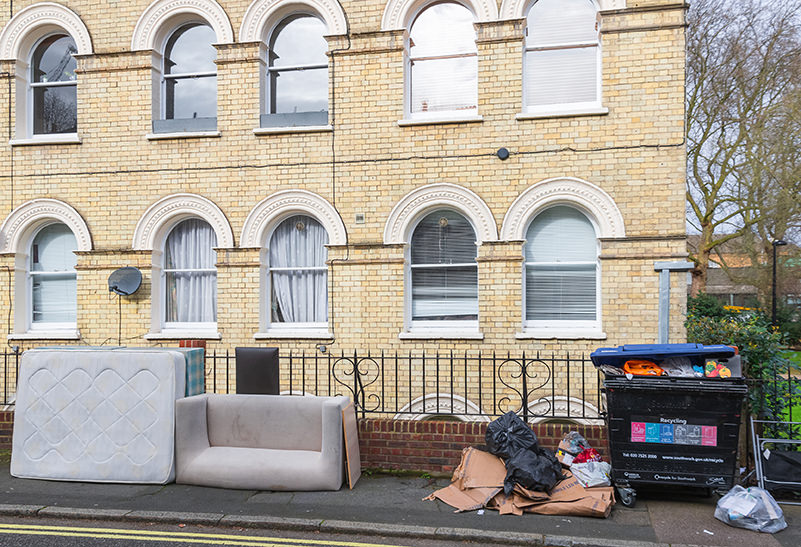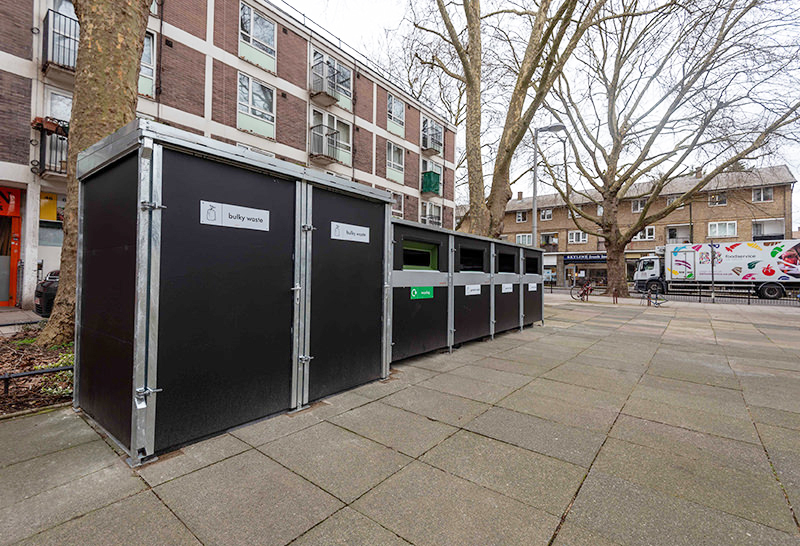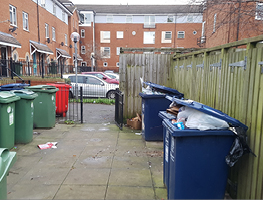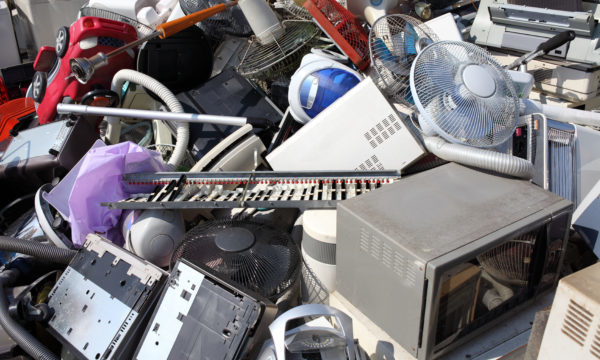Table of Contents:
Effective waste management in communal environments is a challenge to achieve successfully. Key factors are providing the right facilities, ensuring an appropriate and efficient collection frequency, mitigating fire risk, and enabling the effective separation of recyclables.
One waste stream that is particularly difficult to capture is bulky waste, a major contributing factor in fly tipping statistics. DEFRA reported that local authorities in the UK dealt with 1.09m fly-tipping incidents in 2021/22, with fly-tipped household waste, often constituting bulky items, amounted to 671,000 incidents; almost ⅔ of all those reported.
In communal environments, these incidents not only impact the environment but also negatively affect the well-being of residents, potentially acting as an instigator for further fly-tipping and ultimately derailing community pride in their surroundings and neighbourhood.
The Challenges of Bulky Waste Disposal
Bulky waste, often referred to as “large” or “oversized” items, can include furniture, appliances, electronics, and other items that cannot be stored in regular waste bins to await collection. But one waste-stream that is particularly difficult to capture from communal environments is bulky waste.
For households with access to a size-appropriate vehicle, a trip to the local Household Waste Recycling Centre (HWRC) presents the most effective solution for bulky-waste disposal. However, for those without access to a vehicle, this solution is far less feasible. In communal environments, such as apartment complexes and housing estates, residents are typically forced to rely on council collections, but the criteria for this service typically relies on users storing their bulky waste items on the street to await collection.
In order to restrict further fly-tipping and risk of arson, the designated storage space needs to be safe and secure. However, for buildings with a lack of external space this can be very restrictive, particularly for residents on high-rise buildings where transporting items to the street involves descending multiple flights of stairs. For those with mobility restrictions, this is largely impossible.
For residents, there may also be a lack of awareness regarding proper disposal methods for bulky items, leading to dumping in communal areas. Accumulated bulky waste can quickly detract from the visual environment in communal spaces and discourage residential use, with landlords potentially incurring high removal & disposal costs so that the appearance of their properties is maintained.
Behavioural Drivers for Fly Tipping
Fly-tipping is a prominent societal issue that has an overtly negative visual impact in almost any environment, fly-tipping can have significant financial implications for local councils, with the removal of excess waste then contributes to carbon emissions.
Fly-tipping can also create fire-hazards and contribute towards larger problems for communal environments by creating hot spots for arson and anti-social behaviour. This is one of the leading reasons that bin stores have often been located out of sight.
- A lack of awareness of what constitutes ‘fly-tipping’ with certain types regarded as more socially acceptable. Typically, this is based around misconception and a lack of understanding about its social, environmental and economic consequences.
- Can be motivated by an illusion that you are helping or assisting another, such as the conception that an item can be left as someone might find use for it, particularly if the item is left in a communal bin area as side waste.
- A general lack of understanding about the impacts of fly-tipping on waste management systems and the overall community, alongside an expectation that it will be picked up regardless on collection routes by the local council and without repercussions, such as warning letters or fines.
- Households running out of sufficient bin capacity before collection day and feeling a lack of personal responsibility for unwanted items. Fly-tipping is then perceived as a convenient option, with bulky waste removal potentially perceived as costly and inconvenient.
Tackling Bulky Waste and Fly Tipping
Tackling bulky waste and fly tipping in communal environments is ultimately a collective responsibility that requires the active involvement of residents, landlords, and local authorities. This can be utilised to ensure clarity and provide crucial pathways to raise awareness, enhance waste collection services, and foster a sense of community ownership to create cleaner and more sustainable communal environments.
Community Awareness and Education
- Educational campaigns are useful to inform residents about proper waste disposal methods, while the recycling and reuse of bulky items can be promoted and supported through donation or resale programs. Sharing key information about the environmental and legal consequences of fly tipping can also be used to act as disincentives.
Improved Collection Services
- Collaborate with local authorities to establish regular bulky waste collection days or more prominent and convenient drop-off points in communal environments. In their Reuse, Recycling & Waste Strategy London Borough of Tower Hamlets raises a clear recommendation for every new residential development in the borough to provide short-term storage for bulky waste.
Surveillance and Enforcement
- Installing security cameras in fly-tipping hotspots and communal bin areas can be used to deter illegal dumping by reinforcing accountability. Enforcing stricter penalties and fines for those caught fly tipping, while a more stringent approach, is ultimately necessary to send clear messages that it will not be tolerated.
Community Cleanup Initiatives
- Organize community cleanup events to involve residents in maintaining the cleanliness of communal spaces. Encourage community pride and responsibility by fostering a sense of ownership over the shared environment.
metroSTOR Bin Stores and Housings for Communal Environments
Integral to tackling fly-tipping is establishing the means to capture bulky waste at the source. metroSTOR provides a range of communal bin stores and housings that offer proven solutions for ensuring residents in communal environments have an effective means to better manage bulky waste.
Through a consideration of available footprints, metroSTOR facilitates the designing-out of free space in communal bin stores that tends to attract fly-tipping, helping to reduce potential fire risk. The use of clear signage & apertures is also a proven and effective means of enabling residents to better separate waste streams, with opportunities to introduce WEEE collection reducing fire risk and also eliminating the dumping of unwanted electrical items in general household waste.
Options to specify metroSTOR PTM Outdoor Storage Units as bulky waste stores are also effective solutions to enable short-term storage of items as they await collection, helping to restrict fire risk and further instances of fly tipping. For landlords, this can be key to reducing bulky waste disposal costs and improving the quality and appearance of communal environments.
